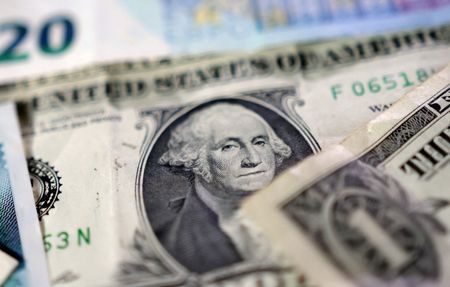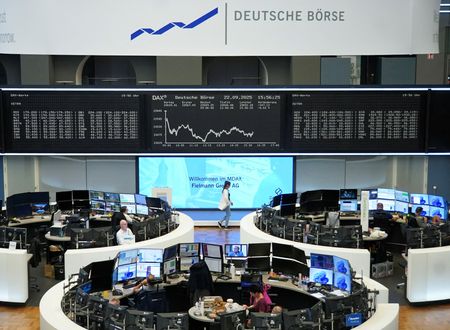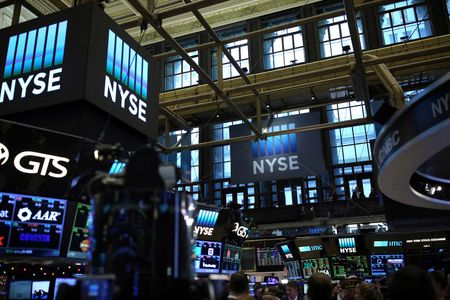By Jaspreet Kalra and Rocky Swift
MUMBAI/TOKYO (Reuters) -The dollar was steady against the euro and sterling on Friday, holding on to steep gains as investors awaited U.S. consumer spending data after better-than-expected growth numbers dampened expectations of further easing by the Federal Reserve this year.
The euro was hovering near a three-week low at $1.1667 while sterling was flat at $1.3351 after touching a near two-month trough on Thursday.
The yen traded at an eight-week low following a new raft of tariffs announced by U.S. President Donald Trump which included a 100% levy on branded drugs, 25% on heavy-duty trucks, and 50% on kitchen cabinets.
MUTED CURRENCY REACTION DUE TO EXEMPTION HOPES
Shares in Europe’s biggest pharma companies were steady after an early dip, with analysts pointing out that exemptions for firms that set up manufacturing facilities in the U.S. meant that regional giants such as Roche and Novo Nordisk are likely to see a muted impact.
“It’s not surprising to see the muted reaction in currencies as markets have been through multiple rounds of this already and are inclined to see the announcements more as a negotiating position being set up by the White House,” said Nick Rees, head of macro research at Monex Europe.
Also, the bilateral trade deals that various countries have struck with the Trump administration have not been as disruptive as initially feared, and this has further assuaged markets’ sensitivity, he said.
The dollar index, which measures the greenback against major currencies, was poised for its biggest weekly advance in two months after figures on U.S. economic growth, unemployment claims, durable goods and wholesale inventories all beat expectations on Thursday.
FED RATE CUT BETS TRIMMED
Attention now turns to the release of U.S. consumer spending and PCE inflation data later on Friday for further signals on how urgently the economy needs additional rate cuts from the Fed.
Markets are now pricing in about a 14.5% chance of the Fed keeping rates unchanged next month, up slightly from 8.1% a day earlier, according to the CME FedWatch Tool. The cumulative policy easing priced in by the end of the year has also dipped below 40 basis points.
The Commerce Department reported on Thursday that U.S. gross domestic product rose by an upwardly revised rate of 3.8% from April through June, higher than the 3.3% initially reported. Economists polled by Reuters did not expect the rate to be revised.
Friday’s personal consumption expenditures (PCE) price index, the Fed’s preferred inflation measure, is expected to show a 0.3% month-on-month increase for August and a 2.7% year-on-year rise, according to a Reuters poll.
“We think more good news is needed to keep the dollar going, and we see substantial risks of a correction today after a USD rally that looks slightly overdone,” Francesco Pesole, FX strategist at ING said in a note.
While the euro could rise above $1.17 in the near term, a rise in market sensitivity to geopolitical tension in Europe alongside continued strength in U.S. economic data presents a risk, the note said.
Elsewhere, data showed that core inflation in September for Tokyo stayed well above the Bank of Japan’s central 2% target, keeping alive expectations of a near-term interest rate hike.
(Reporting by Jaspreet Kalra and Rocky Swift; Editing by Muralikumar Anantharaman, Jamie Freed, Gareth Jones and Chizu Nomiyama )










